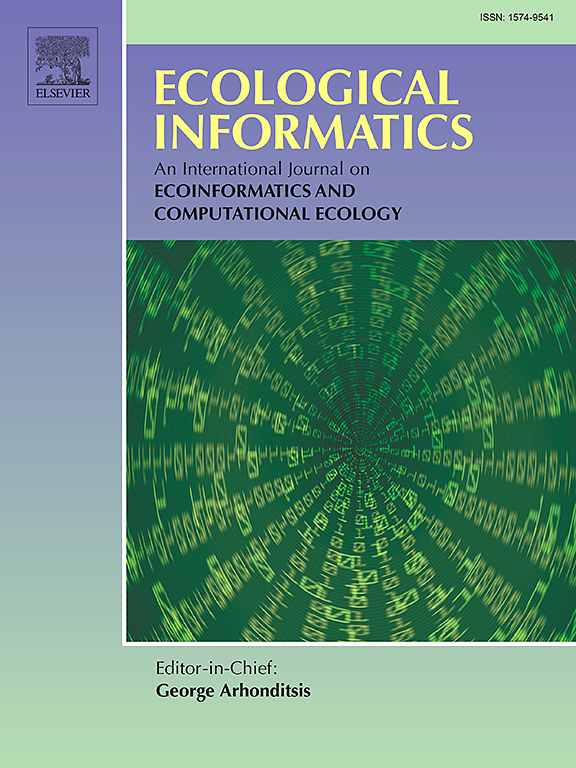Desertification in northern China from 2000 to 2020: The spatial–temporal processes and driving mechanisms
IF 5.8
2区 环境科学与生态学
Q1 ECOLOGY
引用次数: 0
Abstract
Desertification is one of the most significant environmental and social challenges globally. Monitoring desertification dynamics and quantitatively identifying the contributions of its driving factors are crucial for land restoration and sustainable development. This study develops a standardized methodological framework that combines desertification dynamics with driving mechanisms at the pixel level, applied to northern China from 2000 to 2020. Using multisource data and employing the Time Series Segmentation and Residual Trend analysis (TSS-RESTREND) method alongside geographical detector, we quantitatively assessed desertification reversion, expansion, and abrupt change processes, along with the impacts and interactions of natural and human factors were quantitatively assessed. Over the past two decades, the proportion of desertified land decreased by 5.60%. Notably, 32.88% of the study area experienced significant desertification reversion, while only 5.86% underwent expansion. Abrupt changes in both reversed and expanding areas were observed, primarily in the central and western regions, with these changes concentrated in the periods of 2009–2011 and 2014–2016. The impacts of various factors in different sub-regions exhibited significant spatial heterogeneity. Increased precipitation, temperature, and evapotranspiration contributed to reversion in the western area, while decreased wind speed influenced the eastern area. Additionally, decreased population density and afforestation activities also promoted desertification reversion. In contrast, decreased precipitation and increased temperature contributed to expansion in the western and eastern areas, respectively, with increased population density exacerbating this process. Overall, the interactions between natural and human factors were enhanced. Future desertification control and ecological engineering planning should focus on the coupling effects of different driving factors and relevant abrupt vegetation changes.2000-2020 年中国北方的荒漠化:时空过程与驱动机制
荒漠化是全球最重大的环境和社会挑战之一。监测荒漠化动态并定量识别其驱动因素对土地恢复和可持续发展至关重要。本研究建立了一个标准化的方法框架,将荒漠化动态与像素级的驱动机制结合起来,应用于 2000 年至 2020 年的华北地区。利用多源数据,采用时间序列分割和残差趋势分析(TSS-RESTREND)方法和地理检测器,我们定量评估了荒漠化的恢复、扩展和突变过程,并定量评估了自然和人为因素的影响和相互作用。在过去二十年中,荒漠化土地的比例下降了 5.60%。值得注意的是,32.88%的研究区域经历了显著的荒漠化逆转,只有 5.86%的区域经历了扩展。逆转和扩大的区域都出现了急剧变化,主要集中在中西部地区,这些变化主要集中在 2009-2011 年和 2014-2016 年。各种因素对不同次区域的影响呈现出显著的空间异质性。降水量、温度和蒸散量的增加导致了西部地区的逆转,而风速的降低则影响了东部地区。此外,人口密度下降和植树造林活动也促进了荒漠化的逆转。与此相反,降水量减少和气温升高分别导致了西部和东部地区的扩展,而人口密度的增加则加剧了这一过程。总体而言,自然因素和人为因素之间的相互作用得到了加强。未来的荒漠化控制和生态工程规划应关注不同驱动因素的耦合效应和相关的植被突变。
本文章由计算机程序翻译,如有差异,请以英文原文为准。
求助全文
约1分钟内获得全文
求助全文
来源期刊

Ecological Informatics
环境科学-生态学
CiteScore
8.30
自引率
11.80%
发文量
346
审稿时长
46 days
期刊介绍:
The journal Ecological Informatics is devoted to the publication of high quality, peer-reviewed articles on all aspects of computational ecology, data science and biogeography. The scope of the journal takes into account the data-intensive nature of ecology, the growing capacity of information technology to access, harness and leverage complex data as well as the critical need for informing sustainable management in view of global environmental and climate change.
The nature of the journal is interdisciplinary at the crossover between ecology and informatics. It focuses on novel concepts and techniques for image- and genome-based monitoring and interpretation, sensor- and multimedia-based data acquisition, internet-based data archiving and sharing, data assimilation, modelling and prediction of ecological data.
 求助内容:
求助内容: 应助结果提醒方式:
应助结果提醒方式:


